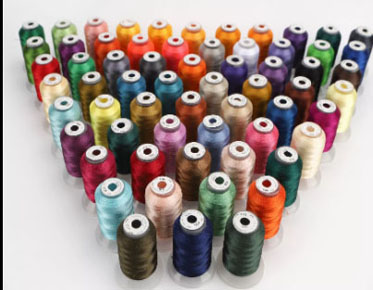How to Choose an Embroidery Tool for Digitizing on a Computer
There are
several different kinds of digitizing embroidery.
The more common form of embroidery produces a pattern of smooth threads that
are stitched together so that they completely cover the material to form the
design. The most important embroidery tool in this form is the embroidery hoop
or jig frame used to hold the fabric taut while the work is done. Special
embroidery needles are also used which come in different sizes to accommodate
different sizes of embroidery floss and ribbon.
Punch
embroidery is also known as Russian embroidery, a type of embroidery that has
been revived and is gaining in popularity. This type of embroidery is similar
to a latch hook in that it forms a thick pile on the finished side of the
piece. As with the first form of embroidered fabric, use an embroidery hoop or
jig frame to hold the fabric in place. Then using an embroidery tool called a
punch needle, the tiny loops are inserted by pushing the thread through the
back of the fabric.
Embroidery
punching tools come in different sizes, and some have interchangeable needles
of different sizes. This makes it possible to use only one strand of embroidery
floss while using many, even thicker things like ribbon. Thread the floss
through the punch tool with the long end sticking out the top so that each
stitch feeds it into the punch. After each punch, the user moves the embroidery
tool over a few threads in the fabric and makes another stitch. To avoid
pulling the loop out, allow the needle to graze the fabric as it moves from one
stitch to the next.
Every embroidery tool must be chosen carefully. For example, any type of needle must fit the floss or ribbon being used. Embroidery punch tools with several different size needle attachments are a popular choice for embroidery punch artists. Another important thing to consider is what kind of embroidery hoop to use. A special hoop called a jig frame is usually preferred because it better holds the fabric being embroidered. Also, many experts recommend that novices use smaller embroidery hoops because they are easier to work with.
Other tools
that can be used for embroidery include embroidery scissors, rubber stamps for
inking designs, or transferring designs from special paper to fabric or ironing
fusible iron-on stabilizers to the back of fabric.



